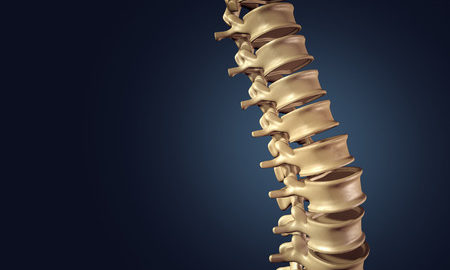Damaged Spinal Discs May Benefit from Stem Cell Treatment

Scientists at the Clinic for Small Animal Surgery at the University of Zurich have conducted experiments to regenerate damaged spinal discs in dogs. The neurologists hope that the findings will help pave the way for treatment of intervertebral disc disorders in humans.
Intervertebral Discs: Shock Absorbers of the Spine
The intervertebral discs are the shock absorbers of the spine. As the name suggests, these fibrocartilaginous discs are present in between the vertebrae. They provide a cushioning effect when a person jumps, bends, or takes a step. Over time, a degeneration of these discs is observed and this may be associated with a pinching of the spinal nerves, leading to pain or paralysis. Similar effects have been observed in dogs.
Intervertebral discs are not able to regenerate and repair themselves. Therefore, degenerated discs are treated with surgery where the disc material is extracted to relieve pressure and treat the pain. However, this operation does not address the treat the degeneration.
Damaged Spinal Discs May Benefit from Stem Cell Treatment
Stem cells are precursor cells that can differentiate into the various tissues found in the body. Scientists have placed great hope in stem cell therapy to treat a number of human diseases. In the current study, the researchers in Zurich injected stem cells into the damaged spines of three German Shepherd dogs. Importantly, the injection was well tolerated. The hope is that the stem cells will mature into cartilage cells and produce new intervertebral disc cartilage to replace the damaged tissue.
New Treatment for Slip Disc
The team conducted the research on regeneration of intervertebral discs in dogs because the pathophysiology of slip disc closely mimics that in humans. This will allow the researchers to gain insight into the disease and draw conclusions that could help develop a new treatment for slip discs.
The team obtained stem cells from the pelvic bone marrow of the affected dogs. These stem cells were then cleaned and prepped in the laboratory and injected into the area of the spine with the damaged intervertebral disc. The objective was to trigger a repair process at the cellular and molecular level.
The results are promising in that the injections were well tolerated by the three dogs. However, MRI did not show any clear indication that the stem cells had lead to regeneration of the discs in comparison to a control group of untreated dogs. The scientists are not discouraged, however. Tolerability of treatment is a necessary first step, says Frank Steffen, a neurologist who was part of the team. We will now add targeted growth factors to the stem cell injections to improve the effectiveness of the treatment, he says.
References:
- https://www.medicalnewstoday.com/releases/317376.php


